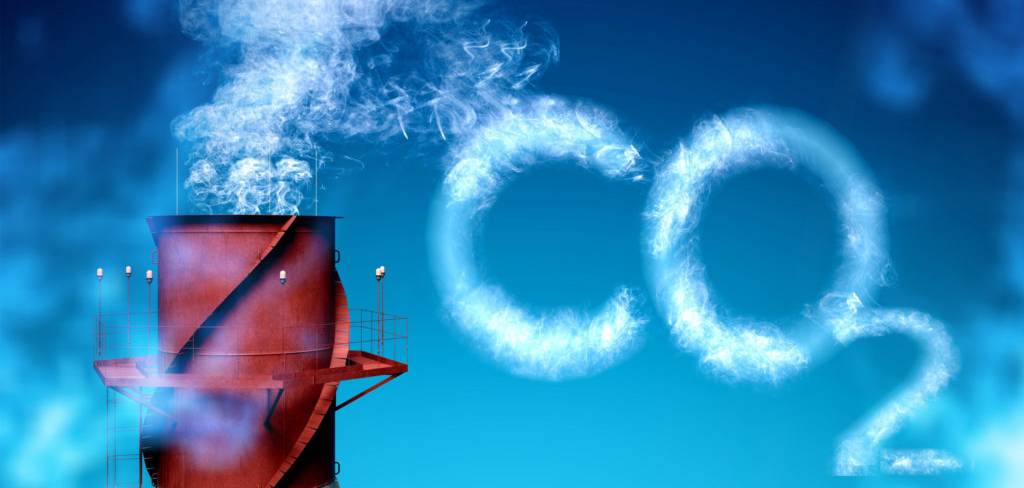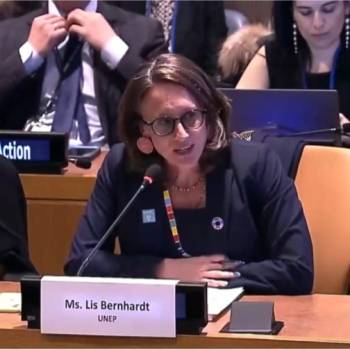
The new IPCC report is at the heart of the global climate negotiations to be held in Glasgow in November.
At the Cairns conference two decades ago, the then relatively new notion of carbon capture and storage was discussed. It's the idea that carbon pollution from power generation and industry could somehow be captured and permanently stored in stable geological structures underground. What if the material burned to produce heat or industrial energy was not coal or gas, but biological material like agricultural waste?
In this case, the plant matter would suck carbon dioxide from the sky as it grows, and then be buried after producing energy. It would not only be a way of being carbon neutral, but carbon negative.
In 2000, scientists had been warning for a long time that the world had to drastically reduce greenhouse gas emissions or risk dangerous global warming. Small steps, such as the signing of the Kyoto Protocol in 1997, have been taken. The problem was that scientists found it increasingly difficult to model a future in which dangerous climate change was not a virtual certainty if future emission reductions were not taken into account. There was already too much carbon in the atmosphere and millions of tons more were being emitted day after day.
Even as politicians argued over emission reductions, scientists realized that the window for making reductions was closing rapidly. Soon we would need both emission reductions and a reduction in the carbon dioxide already released. In 2005, many scientists who had worked on this concept also published work on negative emission technologies. What is carbon capture and storage (and does it work)? Unable to present predictions that reliably showed a world avoiding dangerous climate change, the IPCC began to include bioenergy with carbon capture and storage - or BECCS for short - in its climate action models. Soon BECCS became what the British online journal Carbon Brief described as a “life saving technology”, championed in climate models even though it had not yet been proven.
Now, all of the IPCC models that see the world succeeding in keeping warming below 1.5 degrees incorporate the use of BECCS, although it has yet to be proven on a large scale. The IPCC's adoption of carbon capture in this context has been used as evidence by governments such as Australia that carbon capture and storage is valuable as a tool to combat global warming. .
Believing more in a technological solution to tackle climate change rather than in massive, costly and immediate reductions in emissions is at the heart of not only the Australian government's climate response, but also much more ambitious goals of the United States government. . The CEO of the Clean Energy Finance Corporation told the Senate that no one in Australia pays you to sequester carbon in the soil, so the cost of capital cannot be offset. "You don't have to give up quality of life to achieve some of the things we want to achieve," US President Joe Biden's climate envoy John Kerry told the BBC in May. “Scientists have told me that 50 percent of the reductions we need to make (to reach near zero emissions) by 2050 or 2045 would come from technologies that we haven't yet invented. "This optimism leaves perplexed scientific Möllersten who never considered BECCS as an emergency tool to use as a last resort.
Australian environmentalist Tim Flannery says it's like we took off on a plane before the landing gear was designed, let alone built, and expected the job to be done on it. 'one way or another before we ask.
The findings of the IPCC's Working Group on the Extent of Climate Change, released on Monday, form the first of three reports in what is known as the IPCC's Sixth Assessment Round. The last cycle took place in 2014. It is impossible to ignore the significance of these evaluations. One preliminary assessment helped lead the world to the 1997 Kyoto Protocol. More recently, another has been at the heart of the Paris Agreement negotiations. The report of the first task force is the product of billions of dollars of scientific investment and millions of hours of research by thousands of scientists around the world. Its 234 authors have read and summarized 14,000 scientific articles published since 2014 and responded to 75,000 journal comments on their work.
This “golden book” of climate science is here to urge the world to go much faster in the climate fight. At the time of writing, representatives of the 195 IPCC member countries were perusing the 40-page summary of the report line by line, negotiating terms and turns of phrase that all could agree on, but that reflect also the truth of science.
The IPCC itself noted that this grueling process took place as extreme weather conditions wreaked havoc throughout the Northern Hemisphere. Record-breaking heat waves fueled fires in the United States and Canada as well as across southern Europe. Sudden downpours killed 196 people in Germany and Belgium. “The German language can hardly describe the devastation,” said German Chancellor Angela Merkel. World Meteorological Organization secretary-general Petteri Taalas told a UN meeting that climate change was already visible. “We don't need to tell people it exists. We are seeing more and more extreme events, ” he said.
“Heat waves, drought and floods in Europe and China. "The Executive Secretary of the UN Climate Change, Patricia Espinosa, said that the decisions taken this year will decide whether it will be possible or not to limit global warming to 1.5 ° C above the age pre-industrial by the end of the century. “The world is currently on the wrong track, heading for a 3 ° C hike ,” she said. “We urgently need to change course. "Indeed, many observers expected that the report says that warming beyond 1.5 degrees is already locked because of the amount of carbon dioxide in the atmosphere. “Australia at the end of last year had already warmed by 1.44 degrees since 1910, when the records started,” said Lesley Hughes of the Climate Council, a former lead author of the IPCC.
Deadly US heatwave points to sweltering future for our cities "Temperatures in Australia have been at the upper limit of model predictions," she said, predicting that on our current track deadly 50-degree days could be relatively common in Sydney and Melbourne by 2050. “There's a lot of talk about it right now, and the concern is whether we're going to exceed the 1.5 degree target, ” she said. “There is a lot of evidence [...] that it is likely, but that does not mean that the Paris Climate Agreement is lost. It is enshrined in the Paris Climate Agreement that if we go over 1.5 degrees, we have to work very hard to bring ourselves back to a safer climate and stay well below two degrees.
Three years ago, the IPCC itself published a report claiming that limiting global warming would require "rapid and far-reaching" transitions in the sectors of land, energy, industry, buildings. , transport and cities. "Limiting warming to 1.5 ° C is possible under the laws of chemistry and physics, but that would require unprecedented changes ," said Jim Skea of the IPCC at the time.
Since then, even more carbon has been released, and computer modeling, which scientists have relied on to predict the impact of greenhouse gases on warming, has improved dramatically. One of the IPCC's lead authors, CSIRO chief scientist pep Canadell, said this week that the new report will lay out the likelihood of temperatures exceeding 1.5 degrees of warming, as well as the time frame within which it could occur. produce, in different climate action scenarios.
At the heart of most of these scenarios will be the idea that the world will not only begin to reduce carbon emissions at an unprecedented rate, but that we will rapidly develop and deploy technologies to remove carbon from the atmosphere.
Flannery says he fears emissions cuts alone will not be enough to save the world from dangerous warming as world leaders failed to find a solution to the problem at the Copenhagen climate summit in 2009 By the time the Paris Agreement was drawn up five years later, it was clear that massive emission reductions would be needed.
Today, he estimates that we must soon start removing 10 billion tonnes of carbon dioxide from the atmosphere each year and maintain that effort until the end of the century. A once-heated debate over concerns that negative emissions technology might simply give politicians and fossil fuel champions an excuse to keep emitting with the promise of future solutions has been rendered obsolete by the amount of greenhouse pollution. already issued.
Mr Möllersten is obviously of the opinion today that we need radical measures and plans to fight but as he added: It would have been so much more judicious and intelligent if the politicians or the world leaders could put themselves in agree on lofty goals much sooner and work a lot harder. Today's observation is clear. In addition to the reductions in CO² emissions, " we now have an imperative need for negative emissions. It is worrying. We are there."
Posted on 2021-08-10 13:43








Comments